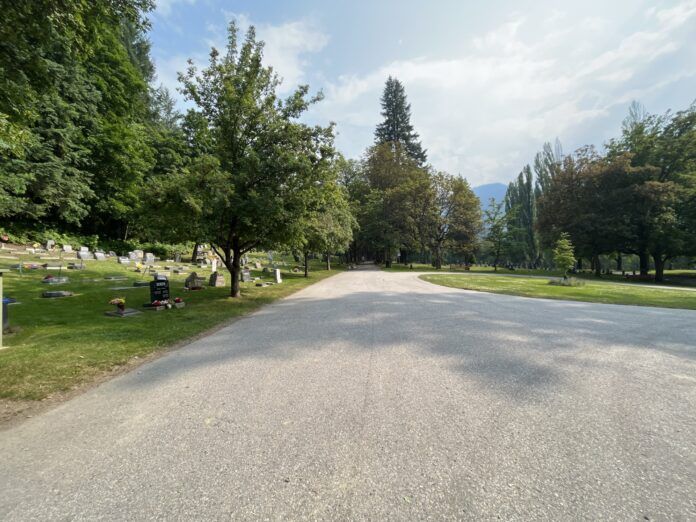Nelson city council is working towards allowing green burials in the Memorial Park Cemetery, but further investigation is required.
The definition of a green burial is similar to a natural burial and involves human remains being buried without embalming in a biodegradable crate or shroud, rather than a traditional casket and without the use of a grave liner.
The definition of a green burial on the Nelson End of Life Society’s website states that it is “An environmentally sensitive practice where the body is returned to the earth to decompose naturally and contribute to new life. It is an alternative to conventional burial or cremation and is a statement of personal values for people who are mindful of the cyclical nature of life.”
The main difference between the two is that in a green burial, trees and plants are planted allowing the grave to integrate with local ecosystems.
The idea to amend current bylaws to allow for green burials came from the Nelson End of Life Society who approached council at last month’s committee of the whole meeting, asking them to amend cemetery bylaws that were assumed to require embalming methods, fiberglass grave liners, a traditional casket or cremation in the city’s cemetery.
Following the meeting, councilor Rik Logtenberg took the initiative to investigate the bylaw and brought his discovery up during council on Tuesday.
Logtenberg stated that the current bylaw does not require human remains to be buried using traditional methods, such as fiberglass grave liners and caskets.
He suggested that the bylaw does not prohibit natural burials, however he said the process to introduce green burials into the cemetery does require additional planning.
Logtenberg asked that council vote on an amendment to the bylaw to emphasize that natural burials are allowed as the current bylaw defines interment as the act of burying a casket or cremated remains in a grave, but it does not specify the requirement of a casket and therefore does not clarify whether burial without a traditional casket is allowed.
He stated that in the bylaw the use of a grave liner is up to the discretion of the crematory licensee whereas the definition of safe interment is set by the director of public works. Seeing that the definition of safe internment is unclear, he asked staff to clarify the current bylaw rather than amending it.
Councilor Keith Page opposed Logtenberg’s motion and said further investigation into the interpretation of safe interment is necessary before a motion is passed to notify the public that natural burials are already allowed.
Logtenberg then said that even if an investigation discovers that natural burials are already permitted, there is still significant planning required before green plots would become available. He said that the cemetery is already in a critical spot regarding space for traditional grave sites as it is, and a green area would require a dedicated spot in the cemetery to ensure enough room is available for the growth of trees and plants.
Council then directed city staff to further investigate the bylaw and determine whether an amendment needs to be made, and ensure that if it does, it doesn’t contradict any provincial bylaws in place. If the motion is passed, natural burials could be seen at the cemetery within months.
Staff and council will review the findings at the next city council meeting in August.







